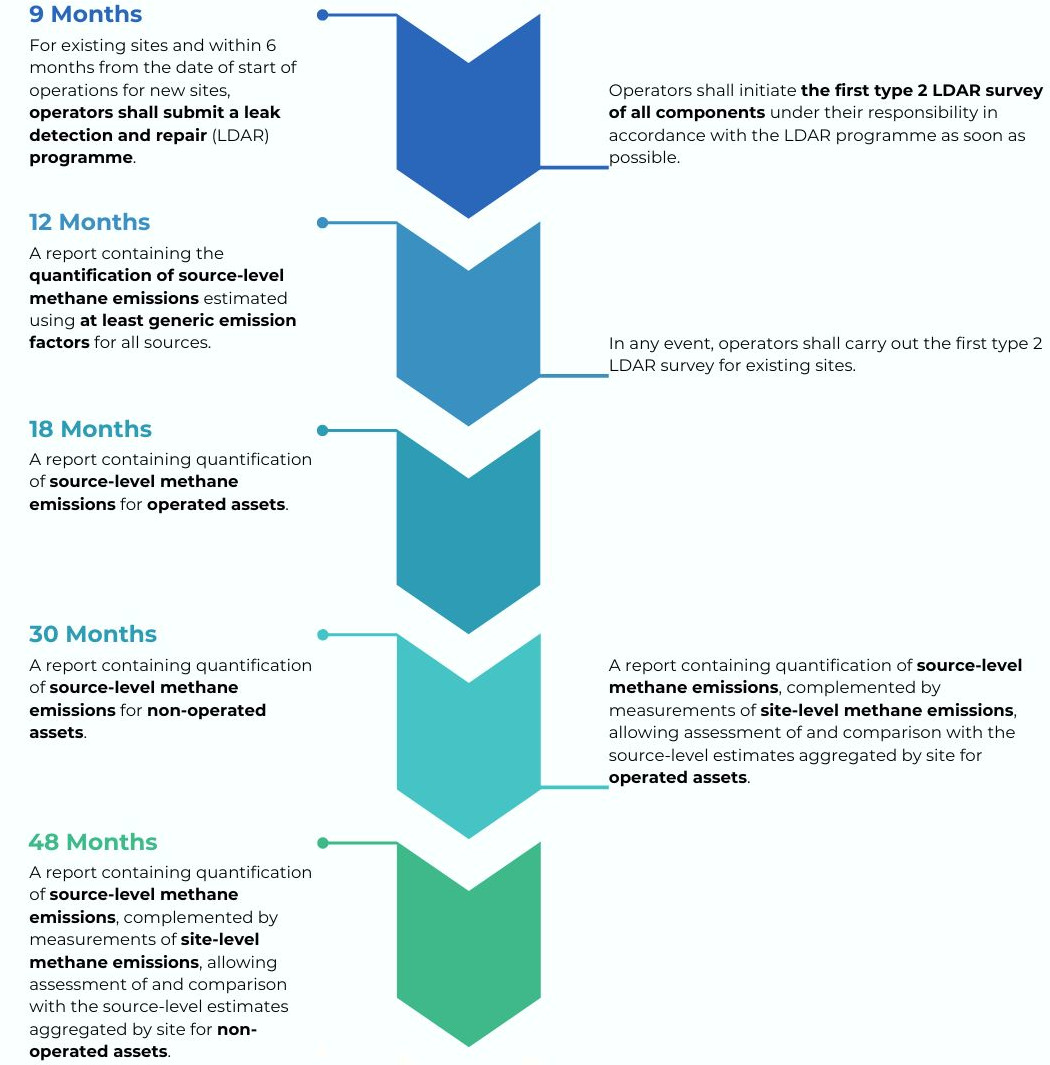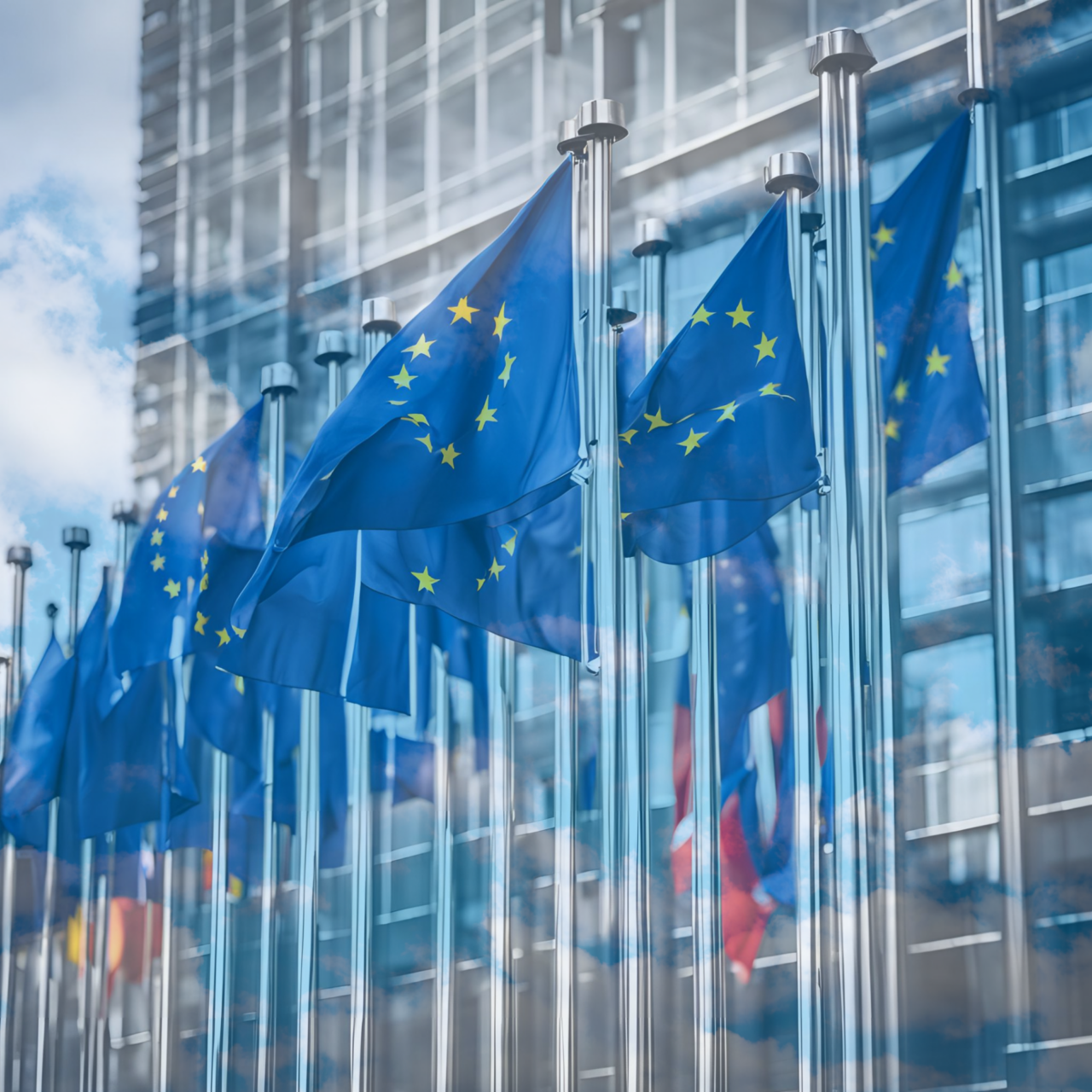What is the EU methane directive?
The first-ever EU Regulation on reduction of methane emissions in the energy sector was adopted on 27 May 2024. The directive outlines new, more stringent requirements and reporting on emissions from all aspects of the energy sector, including imports into the Union.
What is the aim of the new EU methane regulation?
The aim of the new regulation is to drastically cut down emissions as part of the EU’s efforts to achieve carbon neutrality by 2050. Additionally, methane’s potent greenhouse effect has severe implications on air quality, human health as well as the environment; by reducing emissions the negative impact should be mitigated.
What are the new rules concerning emissions monitoring?
The new regulation dictates oil, gas and coal sectors must closely monitor emissions, manage inventory, set mitigation plans and conduct annual reports in accordance with the OGMP framework, applying to all active, unused, and abandoned assets. The consistent measurement, reporting and verification (MRV) requirements for emissions at the source level, including for non-operated assets, aim to increase the accuracy and reliability of emission reports. As of January 2027, these standards will be applied to imports.
What are the new MRV requirements by the EU?
Companies are required to submit reports within 18 months for all operated assets and 30 months for non-operated assets. Information provided must encompass emission source type and location, data per detailed emission source type, to be reported in tonnes of methane and in tonnes of CO2 equivalent. Moreover, detailed reporting on the quantification methodologies will be expected, total methane emissions for operated assets; data on share of ownership and a list of the entities with operational control of the non-operated assets. These stipulations crack down on previous relative slack in emission monitoring, pushing for continuous efforts toward their reduction.

How can Aeromon support in complying with the EU regulation?
To oil and gas companies Aeromon offers its unique expertise in setting up the monitoring plans, gathering data and reporting extremely accurately the found methane leakages. This data is gathered with Aeromon’s mobile (often drone mounted, but not limited to) system providing real-time data on leakages. The data serves as OGMP level 5 measurements and is often used together with the source level data to the reconciliation, so comparison of top-down and bottom up leak detection and repair (LDAR) data.
Aeromon, however supports clients also in accurate flaring efficiency measurements, monitoring simultaneously several parameters
How will the methane intensity be calculated?
The Commission will set a maximum methane intensity value to cap permitted emissions for all crude oil, natural gas and coal imports from 2030 onward. The value will be calculated by assessing existing methane intensity calculation methodologies of the production of oil, gas and coal and considering production processes and site conditions to create a standardised figure. The cap will aim to optimise emission reductions while maintaining the energy supply and economic activity within the Union without discrimination.
What are the new LDAR requirements?
All oil and gas facilities are obliged to conduct leak detection and repair (LDAR) surveys periodically, between intervals of 12-60 months upon commencement.
How are the emissions monitored by the EU?
The European Commission imposed a composite tool on global methane emitters, taking into account satellite data regarding the magnitude, location and frequency of occurrence of high methane emitting sources within and outside the EU, keeping close tabs on the emissions to ensure adequate reduction.
What are the rules in regards to venting and flaring?
Venting and flaring routinely will be banned in oil and gas sectors, as well as restricting thermal coal mines from the latter from 2027 onwards. Occasional venting and flaring will be heavily documented and reported in special circumstances that may require it – such as during safety hazards or equipment malfunction.
What does the regulation state about super-emitters?
The Commission will also set up a monitoring system and rapid alert mechanism for ‘super-emitting’ events, namely for incidents where facilities, equipment or infrastructure emit very high rates of methane that hinder emission reduction efforts. Furthermore, the system will contain data on the magnitude, location and recurrence of such events around the world. The mechanism will act as a forecast to track super-emitting events, alerting countries complicit to mitigate or stop the event.
Does EU ETS (Emissions Trading System) cover methane?
The EU ETS accounts for methane emissions from 2026, as well as nitrous oxide. As of 2024, only carbon dioxide is accounted for. Emissions from maritime transport will be included in the overall ETS cap, which is defined as the maximum quantity of greenhouse gases that can be emitted under the system to meet the Union’s goal of carbon neutrality.
How does the regulation combat emissions from imports?
Emissions from the import of fossil fuels into the EU will be subject to the same monitoring and restriction as those within the Union. Importers will gradually have to implement reductive measures and reassess and renew contracts in order to remain within the set methane intensity limit from 2028 onward, or else face sanction.
How does the regulation increase transparency?
By creating a public database of emissions reported by EU undertakings and importers, with performance profiles of producers, importers and third-country producers, providing insight into emission reduction efforts undergone by oil, gas and coal firms to supplement the purchase decision making of importers. The simple access to emission statistics and reduction assessments increases transparency significantly.
How Can Aeromon Support Compliance with EU Regulations?
Aeromon offers oil and gas companies its unique expertise in setting up monitoring plans, gathering data, and accurately reporting detected methane leakages. This data is collected using Aeromon’s mobile systems—often drone-mounted but not limited to drones—which provide real-time information on leakages. The data qualifies as OGMP (Oil and Gas Methane Partnership) Level 5 site-level measurements and is frequently used alongside source-level data for reconciliation, enabling comparisons between top-down and bottom-up Leak Detection and Repair (LDAR) data.
Additionally, Aeromon supports clients with precise flaring efficiency measurements by simultaneously monitoring several parameters of the flare plume, including methane, carbon monoxide, and volatile organic compounds to assess flaring combustion efficiency and methane destruction efficiency.

